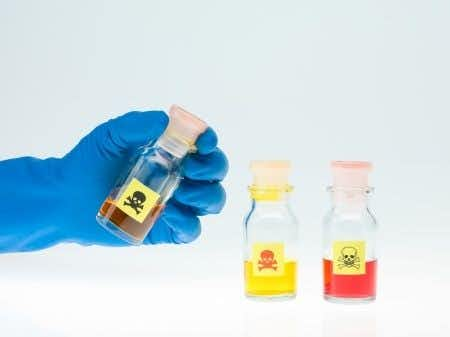A product liability expert witness discusses packaging design flaws of a lamp oil product that resulted in the death of a toddler. A man used containers of citronella torch oil to fill several torches. He then closed the container. Some time later he saw his two-year-old son holding the lamp oil container. His breath smelled like the lamp oil. The poison control center advised giving the child water and his parents took him to the emergency room. He was already in significant respiratory distress when he arrived. He eventually went into cardiac arrest and could not be resuscitated. An autopsy showed he died from acute pulmonary hemorrhages, tracheal and bronchial congestion, diffuse cerebral edema, and multiple cutaneous hemorrhages.
The plaintiff, the victim’s mother, asserted claims of strict liability, fraud and misrepresentation, voluntary undertaking of a duty, breach of warranty, nuisance, consumer fraud, and negligence, and she sought punitive damages. Defendants are the manufacturer of the lamp oil and the manufacturer of the safety cap. A number of experts with specialties of product liability, consumer product safety and material science were retained for the issue.
Question(s) For Expert Witness
1. What design flaws contributed to the death?
2. What alternative designs are available?
Expert Witness Response
This unfortunate child was the victim of what I term “the perfect storm.” This event represents a concatenation of circumstances, which, combined were responsible for the death of this young child. This particular product represents multiple design decisions each of which by itself might not be particularly problematic, but combined makes it “an accident waiting to happen.” Petroleum distillates are themselves potentially toxic. They do have an odor which is not attractive and are colorless. Adding citronella to it, adds a color which may be attractive to children, additionally it tends to impart an odor which is citrus-like and enhances its attractiveness to children. The container it is packaged in happens to be nearly exactly the same as used for fruit juices such as apple juice. The container is transparent and thus the juice-like liquid is readily visible, making the container appear to actually contain a fruit juice and making it more attractive. The container involved is designed to provide refill fuel for smaller torches that are often used for backyard parties often attended by children. The refilling often occurs at the scene of the party and then the refill container is often left in plain view. These parties often involve alcoholic beverages and “letting down the guard,” as to the supervision of children. The containers do have child-resistant caps on them. To be effective, they must be reapplied properly. The user often gets fuel on his/her hands and this makes manipulating the cap properly so that it is reapplied in such a way as to represent resistance to opening by a child. There is a requirement for proper warning labeling to be included. The problem with this is that an estimated 30% of the population is functionally illiterate and children, at the greatest risk, cannot read.
I would suggest changing the general package. Other similar products used for igniting charcoal are packaged in opaque containers. I believe that this would be a valuable start towards making the product safer. Further changing the color into one less attractive and less likely to be confused with juice would be useful. The labeling should clearly relate the dangers to even those functionally illiterate. The “pourability” should be improved. Since many of our exposures occurred when the user transferred product into a paper cup to enable pouring into the torch itself and the exposure came from drinking the remainder in the cup, making the neck top of the container more of a spout would potentially prevent that activity. A last suggestion is to include a funnel for use in pouring the substance into the torches. An alternative would be to design a spout that would enable easy filling of the torches without representing such a danger to children. Although none of these are “foolproof,” they show both an attempt to protect the public as well as being useful in an educational effort to accomplish safe use of the substance.
The expert is a board-certified pediatrician and medical toxicologist who designed and established that state’s poison information system.
About the author
Michael Morgenstern
Michael is Senior Vice President of Marketing at The Expert Institute. Michael oversees every aspect of The Expert Institute’s marketing strategy including SEO, PPC, marketing automation, email marketing, content development, analytics, and branding.



